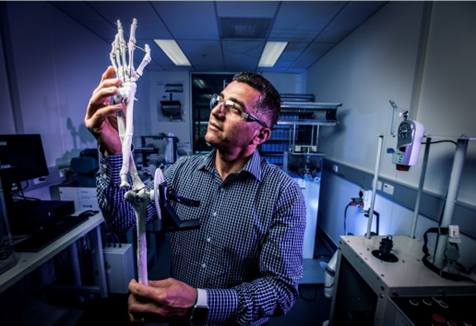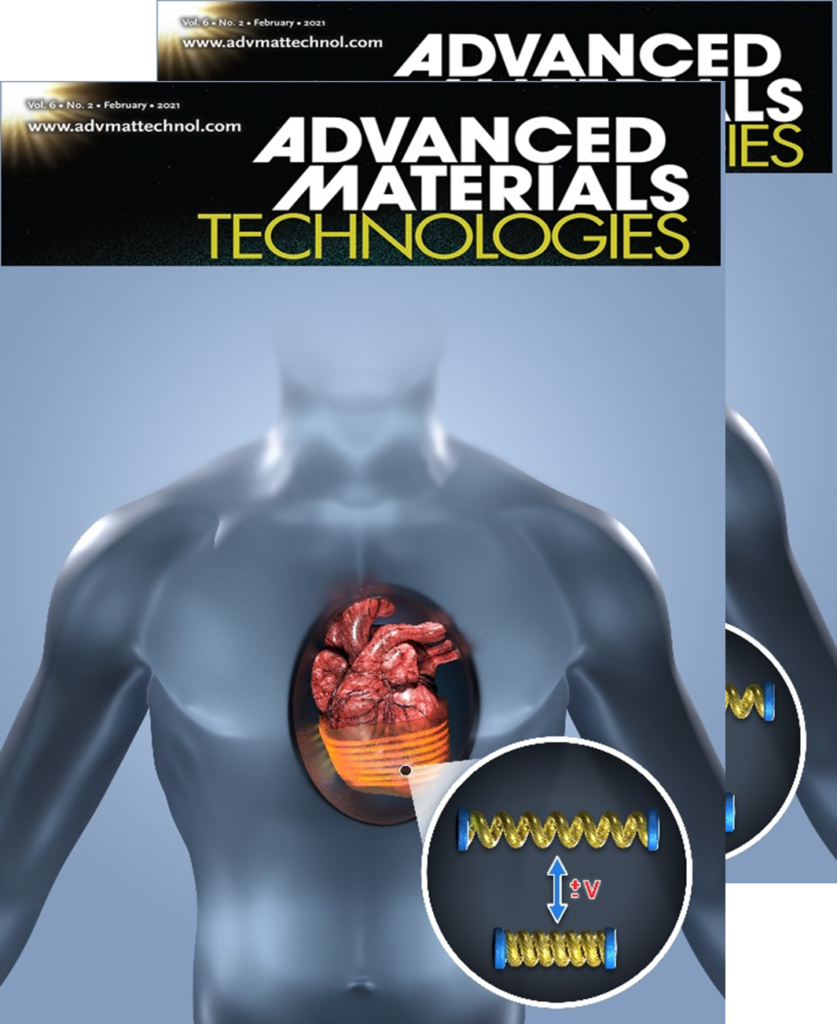Revolutionising Healthcare: The fascinating world of smart materials in biomedical devices
POSTED: 09 Jan, 2024
Smart materials in biomedical devices might sound like something out of a sci-fi movie, but they’re a really cool reality shaping the future of healthcare. They can be integrated into medical devices and hold the promise of improving the quality of life for countless individuals.
Smart materials in biomedical devices might sound like a concept from a science fiction movie, but they’re actually a fascinating reality shaping the future of healthcare. Imagine materials that not only serve a purpose but can also adapt, respond, and even communicate within our bodies. These materials, known as smart materials, are revolutionizing the field of biomedical devices.
So, what exactly are these smart materials?
Well, think of them as materials that have a bit of a brain. They possess unique properties that allow them to sense changes in their environment and respond accordingly. In the realm of healthcare, these materials are engineered to interact with biological systems, making them incredibly versatile for various medical applications.
One of the key features of smart materials is their responsiveness. They can react to changes in temperature, pH levels, light, or even mechanical forces. For instance, imagine a material that can change its shape in response to body heat or a substance that can release a drug precisely when and where it’s needed. These materials have the potential to revolutionize drug delivery systems.
The Role of Smart Materials in Biomedical Devices:
In the field of healthcare, smart materials are at the forefront of creating groundbreaking biomedical devices. These devices are designed to interact seamlessly with the human body, enhancing treatment precision and patient comfort. From implantable sensors that monitor vital signs to drug delivery systems that respond to specific bodily cues, smart materials have opened up a realm of possibilities.
Let’s delve into some examples of how smart materials are transforming biomedical devices:
1. Drug Delivery Systems: Smart materials can be designed to release drugs in a controlled and targeted manner. Imagine tiny particles that carry medicine and only release it when they reach the specific site of an injury or disease. This targeted drug delivery minimizes side effects and maximizes the therapeutic effect.
2. Tissue Engineering: In the field of regenerative medicine, smart materials play a crucial role. They can act as scaffolds, providing support and structure for tissue growth. These materials can mimic the natural environment of cells, guiding their growth and aiding in the regeneration of damaged tissues or organs.
3. Biosensors: Smart materials can be integrated into devices that detect and monitor changes in the body. They can sense biomarkers, glucose levels, or even infections. This technology allows for early detection of diseases and real-time monitoring of a patient’s health, providing invaluable insights for timely interventions.
4. Artificial Muscles: Emulating Nature’s Design. Among the incredible applications of smart materials in healthcare, artificial muscles stand as a testament to innovation inspired by nature. These muscles, also known as electroactive polymers, imitate the functioning of human muscles. They contract, expand, and generate force when stimulated by an electrical charge, replicating the intricate movements of our own musculature. Artificial muscles hold immense promise in various medical applications. Their ability to replicate natural muscle movements opens doors to advancements in prosthetics, creating more lifelike and functional artificial limbs. Moreover, these muscles play a pivotal role in developing assistive devices such as exoskeletons, aiding individuals with mobility impairments to regain movement and independence.
Additionally, researchers at UNSW and Hannover Medical School have developed artificial heart muscles (ventricular assist devices) where artificial muscle-powered soft robotic devices can mimic the action of complex biological systems such as heart compression and twisting. These artificial muscles possess the ability to undergo complex deformations, aiding cardiac function while maintaining a limited weight and use of space. Electrothermally actuated artificial heart muscles have demonstrated superior force generation while creating the prospect for fully soft robotic actuated ventricular assist devices.
5. Self-Healing Materials: Imagine a material that can repair itself when damaged. Self-healing materials, inspired by the body’s healing mechanisms, can seal small cracks or damages, prolonging the lifespan of biomedical devices and reducing the need for frequent replacements.
Now, you might wonder how these materials are made and how they work. Engineers and scientists use a variety of techniques and materials in their development. Some use polymers, which are like long chains of molecules, while others utilize nanoparticles or shape-memory alloys.
The beauty of these materials lies not just in their functionalities but also in their potential to transform patient care. They hold the promise of more effective treatments, reduced invasiveness in surgeries, and improved quality of life for countless individuals.
However, as exciting as these advancements are, their development and application also come with challenges. Ensuring the safety, biocompatibility, and long-term efficacy of these materials remain critical areas of research.
Moreover, the translation of these technologies from the lab to clinical practice requires rigorous testing, regulatory approvals, and considerations for cost-effectiveness.
Smart materials for biomedical devices represent a frontier of innovation in healthcare. Their ability to interact intelligently with biological systems opens doors to a multitude of possibilities, from more targeted therapies to improved diagnostic tools. Although challenges exist, the potential benefits these materials offer are vast, holding the promise of transforming the modern medical landscape for the better. The future of biomedical devices looks bright.
A previous ARC DECRA Fellow, Javad Foroughi is currently a Senior Research Fellow and Chief Investigator in our Hub, in the School of Mechanical and Manufacturing Engineering and a visiting professor at the Department of Thoracic and Cardiovascular Surgery, University of Duisburg-Essen, Germany. His research work focuses on smart materials on artificial muscles, soft robotics and wearable technologies. He is currently collaborating with the UNSW Hub team and Hannover Medical School in Germany to develop high-performance artificial muscles for engineering a biventricular cardiac assist device.
You can reach Javad at j.foroughi@unsw.edu.au
Find him on LinkedIn and X @JForoughi


Schematic of an artificial muscles sleeve as a ventricular assist device based on electrothermally artificial muscles for Treatment of End-Stage Heart Failure.
References:
• Torsional carbon nanotube artificial muscles
• Artificial muscles from fishing line and sewing thread
• Sheath-run artificial muscles
• Knitted carbon-nanotube-sheath/spandex-core elastomeric yarns for artificial muscles and strain sensing
• Self‐healing hydrogels: the next paradigm shift in tissue engineering?
• Biopolymers for antitumor implantable drug delivery systems: recent advances and future outlook
• Artificial Muscles and Soft Robotic Devices for Treatment of End‐Stage Heart Failure
• High Performance Artificial Muscles to Engineer a Ventricular Cardiac Assist Device and Future Perspectives of a Cardiac Sleeve
• Wearable Electronic Textiles from Nanostructured Piezoelectric Fibers
• Intelligent drug delivery systems